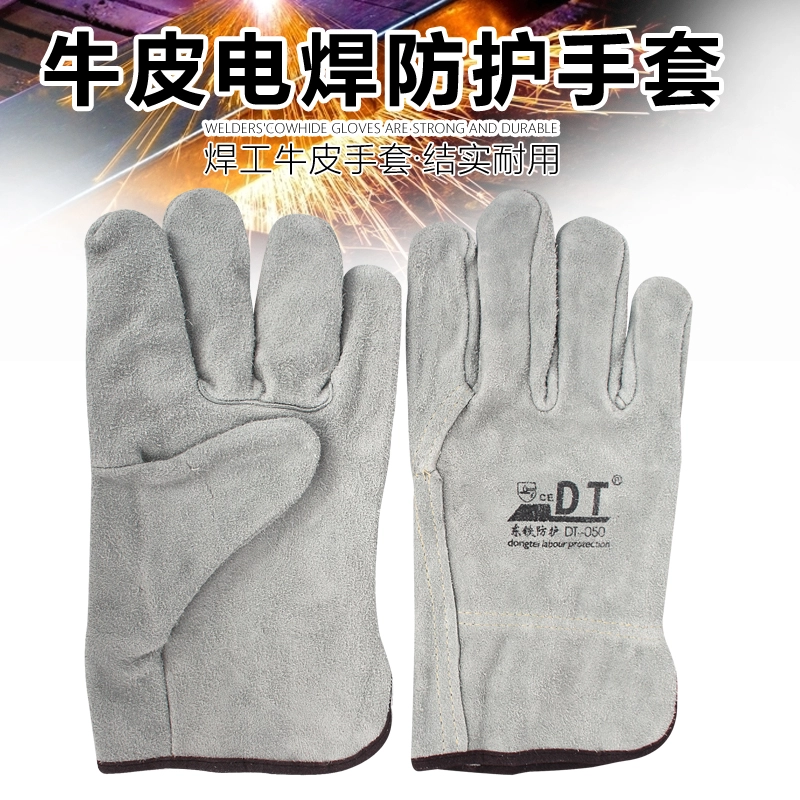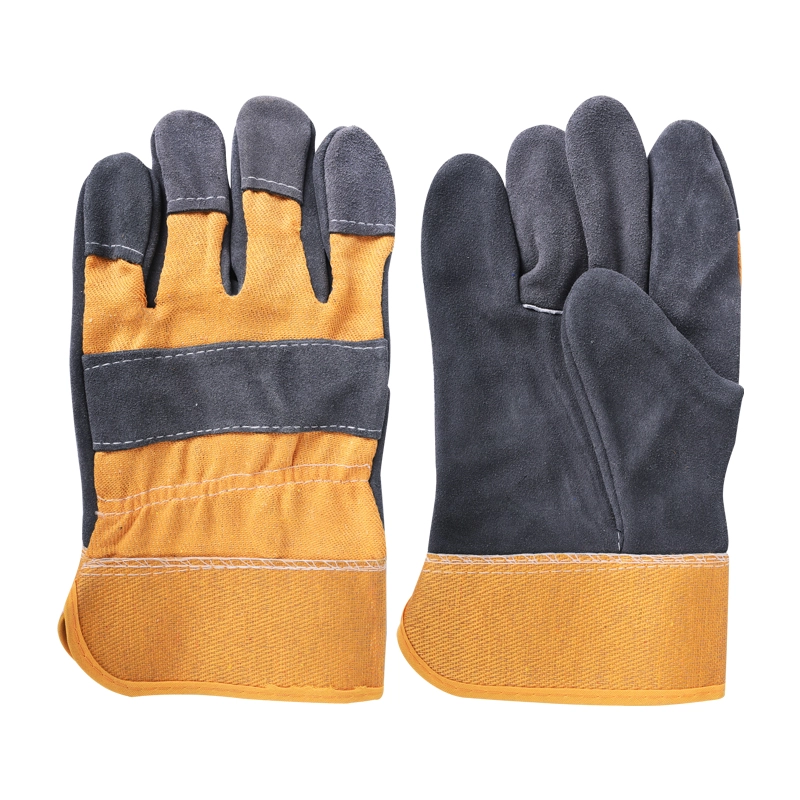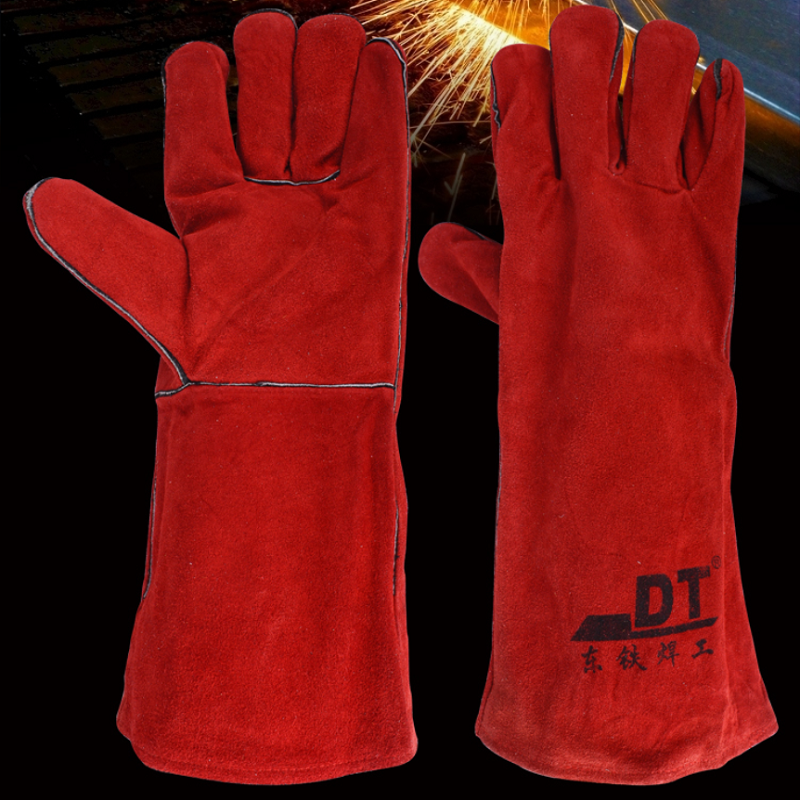Understanding Different Types of Welding Gloves: Choosing the Right Protection for Your Needs
When it comes to welding, safety is not just a priority—it's a necessity. Among the essential pieces of protective gear, a durable pair of welding gloves stands as the first line of defense for a welder's most valuable tools: their hands. This guide is crafted to demystify the world of welding gloves. As a manufacturer with years of experience, I, Allen, will walk you through the different types of gloves, the materials they're made from, and how to choose the right pair for specific welding processes. Read on to discover the best welding gloves for safety, comfort, and performance, ensuring you make an informed decision for yourself or your team.
Why is Choosing the Right Welding Glove So Crucial for Every Welding Process?
In any welding operation, a welder's hands are constantly exposed to a host of hazards. We're talking about intense heat, molten metal spatter, ultraviolet (UV) and infrared (IR) radiation from the arc, and sharp metal edges. Choosing the right welding gloves is not just about comfort; it is a critical safety decision. The right pair of welding gloves can prevent severe burns, cuts, and long-term health issues associated with radiation exposure. Using the wrong type of glove, such as standard work gloves, for a high-amperage welding process is a recipe for disaster.
Furthermore, the right welding glove can significantly impact the quality of your work. The right fit and material can enhance your dexterity and control, allowing for more precise welds and reducing fatigue during long sessions. For a business owner or procurement officer like Mark Thompson, investing in the right glove for the job means protecting your workforce, reducing injury-related downtime, and ultimately improving productivity. A single preventable injury can cost far more than a lifetime supply of high-quality welding gloves. Therefore, understanding the nuances between different welding gloves is the first step toward a safer and more efficient work environment.
What Are the Main Different Types of Welding Gloves Available?
Not all welding gloves are created equal. The type of welding being performed dictates the level of heat protection, dexterity, and durability required from a glove. Broadly, we can categorize welding gloves based on the primary welding process they are designed for: TIG, MIG, and Stick welding. Each of these processes generates different levels of heat and spatter and demands a varying degree of precision from the welder.
This is why you'll find a wide variety of types of welding gloves available on the market. Some gloves offer maximum heat resistance for heavy-duty applications, while others prioritize feel and dexterity for intricate work. At my factory, we produce a range of welding gloves specifically engineered for these different needs. Understanding these categories is essential before making a purchase. You wouldn't use a bulky, heavily insulated glove for a delicate TIG weld, nor would you use a thin, high-dexterity glove for a high-heat stick welding job. Choosing the right pair is about matching the glove's features to the specific demands of the welding tasks.
TIG Welding Gloves: What Makes Them Unique in Providing Dexterity?
TIG welding (Tungsten Inert Gas) is a precision welding process that requires exceptional control and a delicate touch. The welder often has to manually feed a thin filler rod into the weld puddle with one hand while manipulating the TIG torch with the other. Because of this, TIG welding gloves are designed to be thin, soft, and form-fitting, offering the highest level of dexterity among all welding gloves. The goal is to feel the filler rod and have maximum control over its movement.
TIG gloves are typically made from softer, more pliable leathers like goatskin, sheepskin, or deerskin. These materials provide a "second skin" feel that is crucial for the fine motor skills required in TIG welding. Unlike their MIG and Stick counterparts, TIG welding gloves have less insulation and shorter cuffs because the process generates less spatter and radiant heat. While they don't provide the same level of heat protection as other welding gloves, they offer the necessary protection for the lower amperages typical of TIG welding applications. For anyone performing this type of welding, the tactile feedback provided by the right glove is indispensable.
MIG Welding Gloves: How Do They Balance Protection and Flexibility?
MIG welding (Metal Inert Gas) is one of the most common welding processes, known for its speed and versatility. It generates more heat and spatter than TIG welding, which means MIG welding gloves need to offer more substantial protection. However, MIG welding still requires a good degree of dexterity to control the MIG gun, manage the wire speed, and guide the weld along the joint. Therefore, MIG welding gloves are designed to strike a balance between heat resistance and flexibility.
These gloves are typically made from thicker leathers like cowhide or pigskin. Many MIG gloves feature a design where the palm and fingers are made from a more supple leather for dexterity, while the back of the hand is made from a thicker, more durable split leather to shield against spatter and heat. They often come with a cotton or fleece lining for added comfort and heat absorption and have longer cuffs to protect the wrists and forearms. For a procurement manager looking for a versatile, all-around welding glove, high-quality MIG welding gloves are often an excellent choice for a wide range of fabrication and repair work.
What Defines Heavy-Duty Stick Welding Gloves?
Stick welding, also known as Shielded Metal Arc Welding (SMAW), is a robust welding process that generates a significant amount of heat, sparks, and spatter. It's often used in heavy construction, pipe welding, and industrial repairs. Consequently, stick welding gloves are the most heavy-duty of all welding gloves, built with maximum protection as the top priority. Dexterity takes a backseat to ensuring the welder's hands are shielded from the extreme conditions of this arc welding process.
Stick welding gloves are typically made from thick, durable split cowhide or elk leather, which offers excellent heat and abrasion resistance. They are heavily insulated, often with multiple layers of lining such as fleece, foam, or even aluminized material on the back of the hand to reflect radiant heat. A key feature of stick welding gloves is their long, rigid cuffs, which extend well up the forearm to provide comprehensive protection from flying sparks and spatter. When you're performing heavy-duty welding, there is no substitute for the rugged protection that a quality pair of stick welding gloves provides. These gloves are designed to withstand the harshest environments and keep the welder safe.
Quick Comparison of Welding Gloves
| Glove Type | Primary Welding Process | Key Feature | Common Materials | Heat Resistance |
|---|---|---|---|---|
| TIG Gloves | TIG Welding | High Dexterity | Goatskin, Sheepskin | Low to Medium |
| MIG Gloves | MIG Welding | Balanced Protection | Cowhide, Pigskin | Medium to High |
| Stick Gloves | Stick Welding | Maximum Protection | Split Cowhide, Elk | High to Very High |

Glove Material Matters: What are the Best Materials for Welding Gloves?
The glove material is the foundation of any welding glove's performance. Different leathers offer a unique combination of durability, heat resistance, dexterity, and comfort. As a manufacturer, we carefully select materials to engineer gloves for your needs, ensuring they meet the demands of each specific welding process.
- Cowhide: This is the most common material for welding gloves due to its excellent balance of durability, abrasion resistance, and cost-effectiveness. It's often used for MIG and stick welding gloves. Split-grain cowhide is tough and great for heat resistance, while top-grain cowhide is smoother and offers better dexterity.
- Goatskin: Known for its softness, flexibility, and high tensile strength, goatskin is the top choice for TIG welding gloves. It contains natural lanolin, which keeps the leather supple and allows for incredible feel and control.
- Deerskin: Extremely soft and pliable, deerskin provides excellent dexterity and comfort. It molds well to the hand and can handle heat effectively, making it a premium choice for both TIG and light MIG welding.
- Pigskin: This material is known for its durability and resistance to moisture. Pigskin gloves stay soft and flexible even after getting wet, making them a practical choice for various welding tasks.
- Kevlar®: While not a primary glove material itself, Kevlar® thread is crucial for stitching. It is incredibly strong and heat-resistant, ensuring that the seams of your welding gloves don't burn or unravel under stress.
Beyond the Basics: Are Features like Lining and Stitching Important When Choosing the Right Gloves?
Absolutely. While the outer leather welding gloves material provides the primary defense, the internal features are what elevate a good pair of welding gloves to a great one. These details directly impact comfort, durability, and the overall level of protection the gloves provide.
The lining of a welding glove serves two main purposes: comfort and insulation. Linings are often made from soft cotton or flame-resistant fleece, which wicks away sweat and provides a comfortable cushion for the hand. For heavy-duty welding, multi-layered linings with foam or even aluminized layers are used to provide additional thermal protection. A well-lined glove makes a huge difference during long hours of work. The stitching is another critical component. As mentioned, gloves made with Kevlar® thread are far superior because the seams can withstand high temperatures and sparks without failing. Look for gloves with welted seams, where a narrow strip of leather is sewn into the seam to protect the stitching from abrasion and sparks, dramatically increasing the glove's lifespan.
How to Ensure Your Welding Gloves Meet Safety Standards?
For procurement professionals like Mark, ensuring that personal protective equipment meets recognized safety standards is non-negotiable. Reputable welding gloves are designed and tested to comply with specific safety regulations to guarantee their protective capabilities. In North America, the relevant standard is often from the American National Standards Institute (ANSI), such as ANSI/ISEA 105, which rates gloves for cut resistance, abrasion, and heat.
In Europe, the CE marking is essential, and welding gloves must conform to standard EN 12477, which specifies the requirements for gloves designed for welding. This standard combines tests from EN 388 (for mechanical risks like cuts and abrasions) and EN 407 (for thermal risks like heat and flame). When sourcing welding gloves, always ask your supplier for documentation of compliance with these standards. As a factory exporting to the US, Europe, and Australia, we rigorously test our products, including our cut resistant gloves, to ensure they meet or exceed these international requirements, providing you with reliable and certified protection.

Getting the Right Fit: Why Size and Comfort are Non-Negotiable
A poorly fitting pair of welding gloves is not only uncomfortable but also a safety hazard. Gloves that are too large can slip, get caught in machinery, and drastically reduce dexterity. Gloves that are too small can restrict movement, cause hand fatigue, and may not provide adequate coverage, leaving parts of your wrist exposed.
When choosing the right welding gloves, it's crucial to get the correct size. The gloves should fit snugly but not tightly, allowing your fingers to move freely without excess material at the tips. A proper fit enhances control, reduces the risk of accidents, and makes the entire welding experience more comfortable. A comfortable welder is a focused and productive welder. Always refer to a manufacturer's sizing chart and, if possible, try on the gloves before purchasing a large quantity. At our facility, we understand the pain point of inconsistent sizing and maintain strict quality control to ensure our welding gloves are true to size, every time.
Making the Final Decision: How to Choose the Best Welding Gloves for Your Needs
Choosing the right pair of welding gloves boils down to a clear understanding of your specific requirements. Start by identifying the primary type of welding you or your team will be performing. This will be the single most important factor in narrowing down your choices between TIG, MIG, and Stick welding gloves.
Next, consider the amperage and duration of your welding tasks. Higher amperages and longer, continuous welds require gloves that offer greater heat resistance and insulation. For tasks that involve both welding and material handling, you might consider gloves with reinforced palms for extra durability. Finally, never compromise on safety standards and fit. A certified, well-fitting glove is an investment in long-term safety and performance. As a trusted partner, we are committed to helping you navigate these choices, ensuring you receive high-quality welding gloves that meet your technical specifications and budget. By partnering with a knowledgeable manufacturer, you can eliminate inconsistencies and ensure your team is always properly protected.

Key Takeaways for Selecting the Right Welding Gloves:
- Match the Glove to the Process: The most important step is to choose gloves specifically designed for your primary welding process—TIG for dexterity, Stick for maximum protection, and MIG for a balance of both.
- Material is Key: Understand the properties of different leathers. Goatskin for feel (TIG), and durable cowhide for general protection (MIG/Stick).
- Don't Ignore the Details: Look for quality features like Kevlar® stitching and comfortable, heat-resistant linings to ensure durability and comfort.
- Check for Certifications: Always ensure your welding gloves comply with relevant safety standards like ANSI/ISEA 105 or EN 12477.
- A Perfect Fit is a Safe Fit: Poorly fitting gloves are a safety risk. Ensure your gloves are the correct size for optimal control and protection.
- Inspect Your Gloves Regularly: Before each use, inspect your gloves for any holes, tears, or worn-out seams. Replace them immediately if they are compromised.






